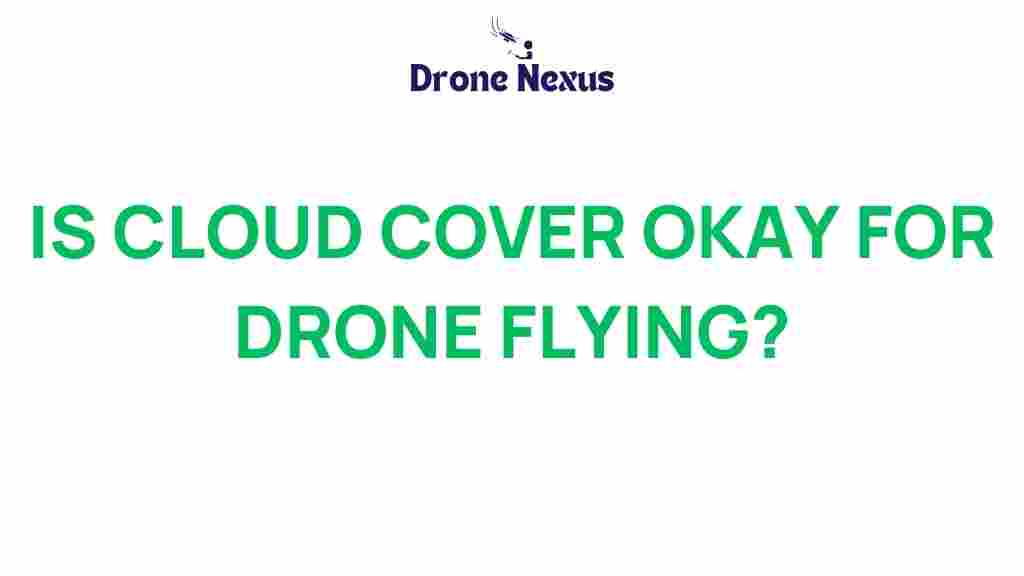Is Cloud Cover a Hindrance or Help for Drone Flying?
As the popularity of drones continues to rise, many enthusiasts and professionals alike are faced with the question of how environmental conditions impact flight operations. One significant factor in this equation is cloud cover. While some might consider cloud cover a hindrance to drone flying, others argue it can offer advantages. In this article, we will explore the nuances of cloud cover and its effects on drone operations, helping you make informed decisions when planning your flights.
Understanding Cloud Cover
Before we dive into the implications of cloud cover on drone flying, it’s essential to understand what it is. Cloud cover refers to the fraction of the sky covered by clouds at a given time. It is usually measured in oktas, which represent the eighths of the sky covered. The types and thickness of clouds can significantly influence visibility, lighting conditions, and drone performance.
Types of Cloud Cover
Not all cloud cover is created equal. Here are some common types of clouds and how they may affect drone operations:
- Cumulus Clouds: These fluffy, white clouds usually indicate fair weather and pose minimal risk to drone flying.
- Stratus Clouds: These gray clouds can lead to overcast conditions and reduced visibility, which may complicate flying.
- Nimbus Clouds: These dark, thick clouds are typically associated with precipitation, making them a significant concern for safe drone operations.
- Cirrus Clouds: High-altitude, wispy clouds that generally do not interfere with drone flying but may signal changing weather.
Impact of Cloud Cover on Drone Flying
Now that we’ve established a foundational understanding of cloud cover, let’s examine how it can either hinder or help drone flying.
Hindrances of Cloud Cover
In many cases, cloud cover can be a hindrance to drone operations. Here’s how:
- Reduced Visibility: Thick cloud cover can significantly reduce visibility, making it challenging to navigate and operate drones effectively.
- Signal Interference: Clouds can potentially interfere with the signals between the drone and the remote controller, leading to communication issues.
- Weather Conditions: Certain cloud types, especially cumulonimbus, indicate stormy weather which can pose hazards such as strong winds, rain, or lightning.
- Battery Life: The colder temperatures associated with higher altitudes and cloud cover can affect battery performance, leading to shorter flight times.
Benefits of Cloud Cover
On the other hand, cloud cover can also provide benefits for drone flying:
- Soft Lighting: Overcast skies can create diffused lighting, reducing harsh shadows and making for better aerial photography and videography.
- Cooler Temperatures: Drones can operate more efficiently in cooler temperatures, which may be experienced under cloud cover.
- Less Wind: Cloud cover often indicates stable weather patterns, leading to calmer flying conditions.
Step-by-Step Process: Flying Drones in Cloud Cover
If you decide to fly your drone in conditions with cloud cover, follow these steps to ensure a safe and successful flight:
1. Check Weather Conditions
Before flying, always check the weather forecast. Look for:
- Cloud cover percentage
- Wind speed and direction
- Possibility of precipitation
2. Assess Visibility
Ensure that visibility is adequate for safe flight. A good rule of thumb is to maintain a visual line of sight with the drone at all times.
3. Calibrate Your Drone
Before takeoff, calibrate your drone’s compass and sensors to ensure optimal performance, especially in changing weather conditions.
4. Plan Your Flight Path
Choose a flight path that avoids thick cloud cover and areas prone to sudden weather changes. This can help ensure a smoother flight experience.
5. Monitor Battery Levels
As conditions may affect battery performance, keep an eye on your battery levels throughout the flight and be prepared to land early if needed.
6. Use Proper Settings
Adjust your camera settings for low-light conditions if you’re flying for photography or videography. Utilize features such as ISO adjustments to capture the best images.
Troubleshooting Tips for Flying in Cloud Cover
Even with careful planning, issues may arise when flying in cloud cover. Here are some troubleshooting tips:
1. Signal Loss
If you experience signal loss, try to:
- Reposition your drone to regain visibility to the controller.
- Fly at a lower altitude where signals may be stronger.
2. Poor Camera Performance
If your camera is not capturing quality images, check the following:
- Adjust exposure settings to compensate for lower light.
- Consider using manual focus to ensure sharp images.
3. Sudden Weather Changes
Stay vigilant for changing weather conditions. If you notice any signs of worsening weather, such as increasing wind or darkening clouds:
- Prepare to land your drone safely.
- Always have a designated landing area in mind.
Conclusion
In conclusion, the impact of cloud cover on drone flying can be both a hindrance and a help, depending on the conditions and your flying capabilities. While reduced visibility and potential signal interference can pose challenges, the advantages of diffused lighting and stable weather can enhance your aerial photography and videography experiences. By understanding the effects of cloud cover and following proper flying protocols, you can navigate these conditions safely and effectively.
For more information on weather conditions and drone flying, check out this comprehensive guide. Additionally, you can explore local regulations related to drone usage during various weather conditions to ensure compliance and safety.
This article is in the category Safety and created by DroneNexus Team
